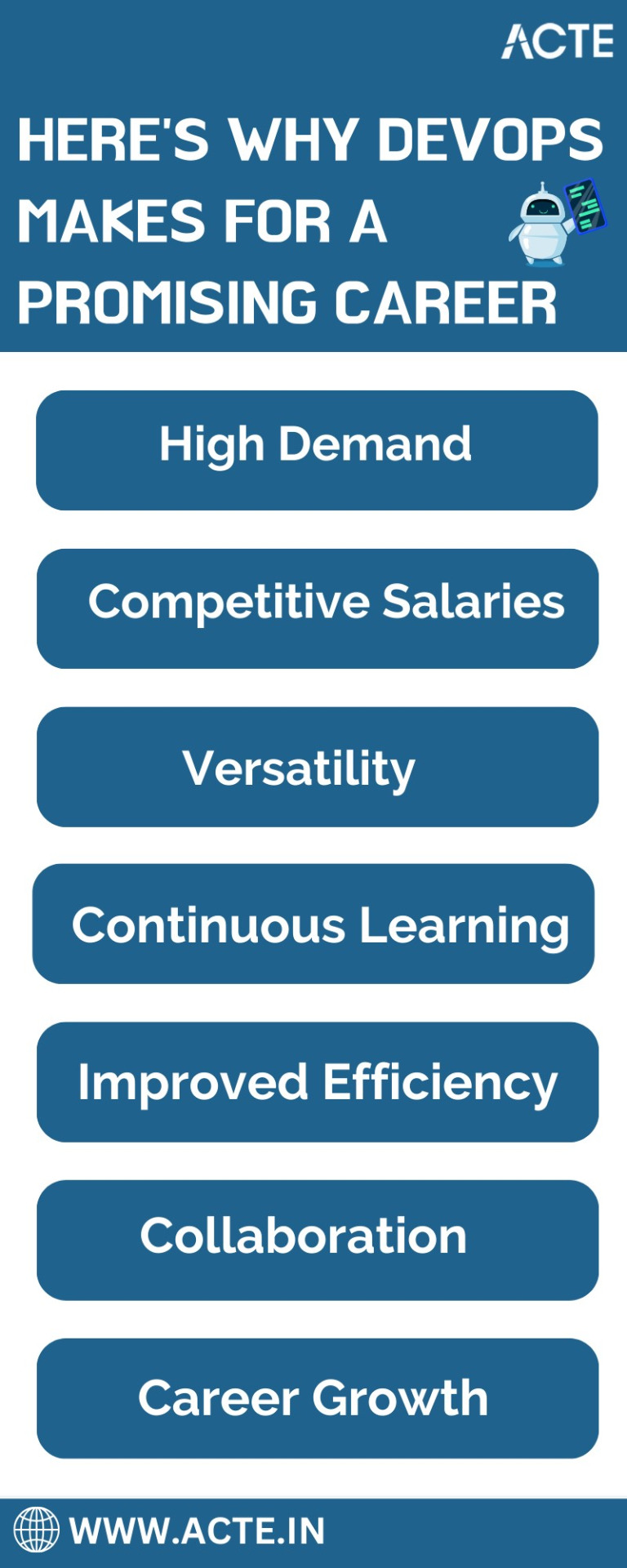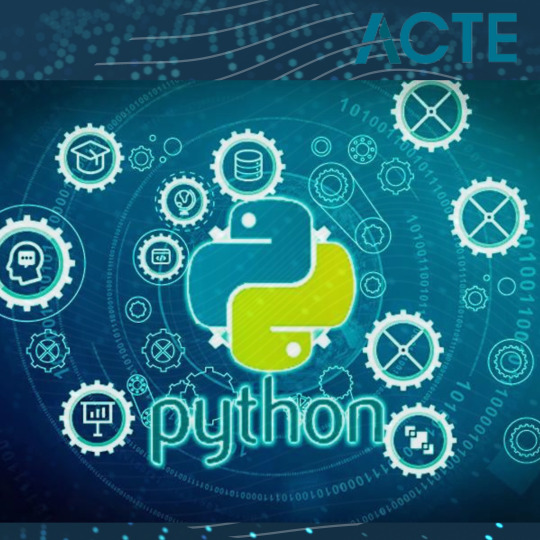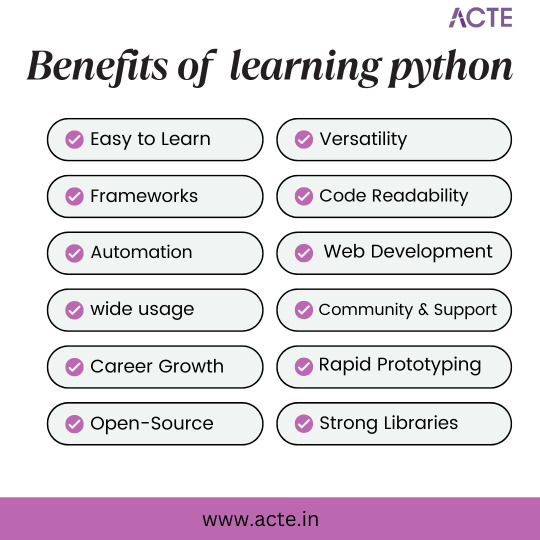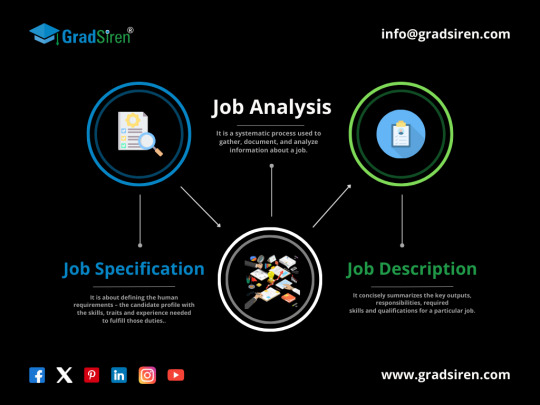#compensation analysis software
Explore tagged Tumblr posts
Text
Overcoming Employee Retention Challenges with Strategic [+Compensation Analysis & Real-Time Data]
Explore the step-by-step guide for strategic compensation analysis.
#salary negotiation#salary guide 2024#Salary trends#compensation analysis#Compensation market analysis#compensation analysis tools#compensation analysis software#compensation benchmarking analysis
0 notes
Text
Get the Best Compensation Analysis Software - Dartican

Dartican is one of the best compensation analysis software designed to help businesses effectively manage and analyze their compensation data. It offers features like salary bench-marking, pay equity analysis, and customizable reporting tools, enabling organizations to make informed decisions regarding employee compensation and ensure fair and competitive pay practices.
0 notes
Note
"chatgpt writing is bad because you can tell when it's chatgpt writing because chatgpt writing is bad". in reality the competent kids are using chatgpt well and the incompetent kids are using chatgpt poorly... like with any other tool.
It's not just like other tools. Calculators and computers and other kinds of automation don't require you to steal the hard work of other people who deserve recognition and compensation. I dont know why I have to keep reminding people of this.
It also uses an exorbitant amount of energy and water during an environmental crisis and it's been linked to declining cognitive skills. The competent kids are becoming less competent by using it and they're fucked when we require in-class essays.
Specifically, it can enhance your writing output and confidence but it decreases creativity, originality, critical thinking, reading comprehension, and makes you prone to data bias. Remember, AI privileges the most common answers, which are often out of date and wrong when it comes to scientific and sociological data. This results in reproduction of racism and sexist ideas, because guess whats common on the internet? Racism and sexism!
Heres a source (its a meta-analysis, so it aggregates data from a collection of studies. This means it has better statistical power than any single study, which could have been biased in a number of ways. Meta analysis= more data points, more data points= higher accuracy).
This study also considers positives of AI by the way, as noted it can increase writing efficiency but the downsides and ethical issues don't make that worthwhile in my opinion. We can and should enhance writing and confidence in other ways.
Heres another source:
The issue here is that if you rely on AI consistently, certain skills start to atrophy. So what happens when you can't use it?
Im not completely against all AI, there is legitimate possibility for ethical usage when its trained on paid for data sets and used for specific purpose. Ive seen good evidence for use in medical fields, and for enhancing language learning in certain ways. If we can find a way to reduce the energy and water consumption then cool.
But when you write essays with chatgpt you're just robbing yourself an opportunity to exercise valuable cognitive muscles and you're also robbing millions of people of the fruit of their own intellectual and creative property. Also like, on a purely aesthetic level it has such boring prose, it makes you sound exactly like everyone else and I actually appreciate a distinctive voice in a piece of writing.
It also often fails to cite ideas that belong to other people, which can get you an academic violation for plagiarism even if your writing isn't identified as AI. And by the way, AI detection software is only going to keep getting better in tandem with AI.
All that said it really doesn't matter to me how good it gets at faking human or how good people get at using it, I'm never going to support it because again, it requires mass scale intellectual theft and (at least currently) it involves an unnecessary energy expenditure. Like it's really not that complicated.
At the end of the day I would much rather know that I did my work. I feel pride in my writing because I know I chose every word, and because integrity matters to me.
This is the last post I'm making about this. If you send me another ask I'll block you and delete it. This space is meant to be fun for me and I don't want to engage in more bullshit discourse here.
15 notes
·
View notes
Text
Blog Post #7
What role does community play in Spier’s transformation?
Community plays a crucial role in Zeke Spier’s transformation by providing both support and a framework for action. As he becomes more involved in activism, the people around him reinforce his beliefs and help him channel his frustrations into organized resistance. The author notes that "Spier found solidarity among activists who shared his convictions, offering him both emotional reassurance and tactical knowledge" (Elin). This suggests that radicalization is not an isolated journey but one deeply embedded in collective struggle, where individuals draw strength from their peers to challenge existing power structures.
For the software mavis beacon, do you think it was ethical for the software developers to take pictures of the woman and put them later for much time
I believe it was unethical for the developers of Mavis Beacon Teaches Typing to use the woman’s image for so long without ensuring her continued consent. While she may have initially agreed to the photoshoot, she likely didn’t anticipate her likeness being used for decades. If she wasn’t fairly compensated or given the option to revoke permission, that raises serious ethical concerns about exploitation and informed consent.
From my perspective, people should have control over how their image is used, especially in commercial products. If the software developers had been more transparent and allowed her to renegotiate her involvement, it would have been a much fairer situation. This case makes me think about how digital rights and image usage should be handled more ethically in today’s world.
How does the internet contribute to the globalization of white supremacist movements
The internet plays a crucial role in the globalization of white supremacist movements by allowing individuals across different countries to connect, share ideologies, and organize. Unlike previous eras, where white supremacist movements were often confined to specific regions, the digital age has facilitated a transnational network of extremists. The text highlights this by noting that "Stormfront’s tagline from the beginning has been ‘white pride worldwide,’ a motto that speaks to the global vision of the site’s creators as well as to the current reach of the site" (Daniels, p. 41). This demonstrates how online platforms serve as hubs for uniting white supremacists beyond national borders, strengthening their collective identity and influence. As a result, these digital spaces not only spread racist ideologies but also provide tools for recruitment, organization, and mobilization, making white supremacy an increasingly globalized phenomenon.
In what ways does the framing of white supremacy as a response to globalization limit our understanding of its impact on society?
Framing white supremacy primarily as a response to globalization rather than as a racial ideology limits our understanding of its deeper societal impact. By emphasizing economic anxieties and cultural displacement, such interpretations risk downplaying the role of systemic racism and historical white privilege. The reading critiques Castells’s analysis, stating that he "mistakenly takes the patriot movement as the ideal type for all other white supremacist organizations" and in doing so, "misses the extent to which the Internet figures in the formation of a global white identity that transcends local and regional ties" (Daniels, p. 45). This suggests that reducing white supremacy to a reaction against globalization ignores its roots in deeply ingrained racial hierarchies. Understanding white supremacy as a structured and historically persistent racial ideology allows for a more comprehensive analysis of its continued presence in society and the ways it adapts in the digital age.
Elin, L. (n.d.-b). The Radicalization of Zeke Spier. Cyberactivism: Online Activism in Theory and Practice.
Seeking Mavis Beacon Documentary
White Supremacist Social Movement Online And In A Global Context by J. Daniels
7 notes
·
View notes
Text
Excerpt from this Op-Ed from the New York Times:
To keep the lights on, many utility companies are proposing to build dozens of new power plants that burn natural gas. North Carolina-based Duke Energy alone wants to add 8.9 gigawatts of new gas-fired capacity — more than the entire country added in 2023. Using their own projections of soaring energy demands as justification, these companies are also pushing back on the climate targets set by their states and the Biden administration.
If state regulators sign off on these plans, they will be gambling with our country’s future. We need to electrify everything from cars to appliances to slow climate change, but we won’t be able to reach our climate goals if we power all of those machines with dirty energy.
There is a better way. But to get there, legislators will need to overhaul the incentives driving utilities to double down on natural gas, so that they can turn a profit without cooking the planet.
Companies like Duke, Dominion Energy and Georgia Power argue that they need more gas-fired plants to reliably provide power during times of peak demand — for instance, on a hot summer weekday afternoon when home cooling systems and data servers are all humming at maximum output, and the grid strains to keep up. But those peaks tend to materialize only for a few dozen hours per year, and there are ways to deal with them that don’t require a massive amount of new methane-burning infrastructure.
The real reason the utilities want to build these plants is quite simple: The more stuff they build, the more money they make. Regulators let utilities charge their customers enough money to cover what they spend on assets like combustion turbines and wires, plus a generous rate of return (up to 10 percent) for their investors. This longstanding arrangement incentivizes power providers to build expensive things whether society needs them or not, in lieu of lower-cost, cleaner options, and to invoke their duty to keep the lights on as a post hoc rationalization.
Fortunately, utilities have plenty of ways to meet this new need.
They include “virtual power plants” — when technologies such as home batteries, rooftop solar systems, smart water heaters and thermostats are linked together and managed via software to provide the same services as a conventional power plant. Utilities in Vermont, Colorado and Massachusetts are already using them, to quickly respond to rising demand at a much lower cost than operating natural gas combustion turbines. According to one estimate, virtual power plants could lower U.S. utilities’ costs by as much as $35 billion over the next decade.
Utilities could also accelerate efforts to replace outdated transmission lines with newer ones that can carry double the electric current and to bring more battery storage online. They can compensate customers for using less energy during times when demand is high and invest far more in energy efficiency, helping customers to adopt devices that use less electricity.
All of these solutions would save customers money and reduce carbon emissions. They could, according to a Department of Energy analysis, meet the entire projected growth in U.S. peak electricity demand over the next decade.
8 notes
·
View notes
Text




==
When a company actually underpays workers, it makes the news.
But if you're going to go, "see...?" you need to know that you're making the same argument as the Xian who says historical record of a local flood is proof of the extinction-level world-wide Genesis flood.
Meanwhile...


#The Rabbit Hole#pay gap#wage gap#pay gap myth#myth of the pay gap#earnings gap#myths and legends#religion is a mental illness
11 notes
·
View notes
Text
Mastering DevOps: A Path to Tech Leadership and Innovation
In the ever-evolving landscape of technology, DevOps stands out as an indicator of innovation and efficiency. As we navigate the digital age, the role of DevOps, which seamlessly blends development and operations practices, has become increasingly important. It not only accelerates software delivery but also promotes collaboration, enhances automation, and ensures the delivery of high-quality applications. If you're considering a career in tech, DevOps is an enticing and promising option. In this comprehensive exploration, we'll dive deep into the world of DevOps careers, unveiling the manifold opportunities, challenges, and avenues for growth that it offers.

Why DevOps? The Irresistible Appeal
1. High Demand for DevOps Professionals
In a world where businesses are constantly striving for efficiency and agility, DevOps professionals are in high demand. Organizations of all sizes, from startups to Fortune 500 giants, recognize the value of DevOps in streamlining development processes, enhancing automation, and improving collaboration among cross-functional teams. This demand translates into a plethora of job opportunities for DevOps experts.
2. Competitive Salaries
In the realm of tech careers, compensation is often a significant factor. DevOps practitioners frequently enjoy competitive salaries, and experienced DevOps engineers, in particular, are handsomely rewarded. This makes DevOps not only a fulfilling career but also a financially rewarding one.
3. Versatility Across Industries
One of the striking features of a DevOps career is its versatility. DevOps skills are transferable across various industries, including finance, healthcare, e-commerce, and more. The fundamental principles and tools of DevOps are universally applicable, allowing you to explore different sectors while leveraging your expertise.
4. Continuous Learning and Adaptation
The tech world thrives on change, and DevOps is no exception. This dynamic field continuously evolves with the emergence of new tools and practices. Staying updated with the latest trends and technologies is not just a requirement but a thrilling aspect of a DevOps career. The pursuit of knowledge and adaptation are ingrained in the DevOps culture.
5. Enhanced Efficiency Through Automation
At the core of DevOps lies the principle of automation. DevOps practices emphasize automating manual processes, reducing errors, and accelerating deployment cycles. The result is enhanced efficiency in development pipelines, enabling teams to deliver software faster and with higher quality.
6. Collaboration as a Core Value
DevOps promotes collaboration and communication between traditionally siloed teams, such as development and operations. This cultural shift towards teamwork and shared responsibilities fosters a more inclusive and productive workplace environment.
7. A Path to Leadership
A DevOps career is not just about technical skills; it's also a pathway to leadership positions. As you gain experience and expertise, you'll find yourself well-equipped to step into roles like DevOps manager, architect, or consultant, where you can influence and shape the DevOps practices of your organization.

The Future of DevOps: A World of Innovation
As we peer into the future, the DevOps landscape promises even more exciting developments:
1. Advanced Automation and AI
Automation will continue to be a driving force in DevOps, with artificial intelligence (AI) playing a more significant role. AI-powered tools will enhance predictive analytics, optimize resource allocation, and further reduce manual intervention in the software development lifecycle.
2. DevOps in Edge Computing
The rise of edge computing, driven by the Internet of Things (IoT), presents new challenges and opportunities for DevOps. DevOps practices will expand to accommodate the unique demands of edge environments, enabling real-time data processing and analysis at the edge of the network.
3. Security-First DevOps
With cybersecurity concerns on the rise, DevOps will place an even greater emphasis on security practices. DevSecOps, the integration of security into the DevOps pipeline, will become standard practice, ensuring that security is not an afterthought but an integral part of the development process.
4. Hybrid and Multi-Cloud DevOps
Hybrid and multi-cloud environments are becoming increasingly prevalent. DevOps will continue to evolve to seamlessly integrate on-premises and cloud resources, providing organizations with the flexibility to choose the best infrastructure for their needs.
5. DevOps as a Service
DevOps as a Service (DaaS) is gaining traction. Organizations will increasingly turn to third-party providers for DevOps solutions, allowing them to focus on their core competencies while leveraging the expertise of specialized DevOps teams.
In a world driven by technology, a career in DevOps offers an exciting journey filled with opportunities for growth and innovation. Whether you're just starting your career or looking to make a transition, DevOps holds the promise of a rewarding path.
To embark on this journey, it's essential to equip yourself with the right skills and knowledge. ACTE Technologies, a renowned provider of DevOps training and certification programs, stands ready to be your guiding light. Their expert-led courses can help you build a complex foundation in DevOps principles, master the relevant tools, and stay ahead in this ever-evolving field.
So, embrace the future of technology with a career in DevOps, and let ACTE Technologies be your trusted companion on the road to excellence. As you explore the endless possibilities of DevOps careers, may your passion for innovation and your commitment to continuous learning lead you to success and fulfillment.
11 notes
·
View notes
Text
Exploring the Python and Its Incredible Benefits:
Python, a versatile programming language known for its simplicity and adaptability, holds a prominent position in the technological landscape. Originating in the late 1980s, Python has garnered substantial attention due to its user-friendly syntax, making it an accessible choice for individuals at all levels of programming expertise. Notably, Python's design principles prioritize code clarity, empowering developers to articulate their ideas effectively and devise elegant solutions.

Python's applicability spans a multitude of domains, encompassing web development, data analysis, artificial intelligence, and scientific computing, among others. Its rich array of libraries and frameworks enhances efficiency in diverse tasks, including crafting dynamic websites, automating routine processes, processing and interpreting data, and constructing intricate applications.
The confluence of Python's flexibility and robust community support has driven its widespread adoption across varied industries. Whether one is a newcomer or an accomplished programmer, Python constitutes a potent toolset for software development and systematic problem-solving.
The ensuing enumeration underscores the merits of acquainting oneself with Python:

Accessible Learning: Python's straightforward syntax expedites the learning curve, enabling a focus on logical problem-solving rather than grappling with intricate language intricacies.
Versatility in Application: Python's versatility finds expression in applications spanning web development, data analysis, AI, and more, cultivating diverse avenues for career exploration.
Data Insight and Analysis: Python's specialized libraries, such as NumPy and Pandas, empower adept data analysis and visualization, enhancing data-driven decision-making.
AI and Machine Learning Proficiency: Python's repository of libraries, including Scikit-Learn, empowers the creation of sophisticated algorithms and AI models.
Web Development Prowess: Python's frameworks, notably Django, facilitate the swift development of dynamic, secure web applications, underscoring its relevance in modern web environments.
Efficient Prototyping: Python's agile development capabilities facilitate the rapid creation of prototypes and experimental models, fostering innovation.
Community Collaboration: The dynamic Python community serves as a wellspring of resources and support, nurturing an environment of continuous learning and problem resolution.
Varied Career Prospects: Proficiency in Python translates to an array of roles across diverse sectors, reflecting the expanding demand for skilled practitioners.
Cross-Disciplinary Impact: Python's adaptability transcends industries, permeating sectors such as finance, healthcare, e-commerce, and scientific research.
Open-Source Advantage: Python's open-source nature encourages collaboration, fostering ongoing refinement and communal contribution.
Robust Toolset: Python's toolkit simplifies complex tasks and accelerates development, enhancing productivity.
Code Elegance: Python's elegant syntax fosters code legibility, promoting teamwork and fostering shared comprehension.
Professional Advancement: Proficiency in Python translates into promising career advancement opportunities and the potential for competitive compensation.
Future-Proofed Skills: Python's enduring prevalence and versatile utility ensure that acquired skills remain pertinent within evolving technological landscapes.
In summation, Python's stature as a versatile, user-friendly programming language stands as a testament to its enduring relevance. Its impact is palpable across industries, driving innovation and technological progress.
If you want to learn more about Python, feel free to contact ACTE Institution because they offer certifications and job opportunities. Experienced teachers can help you learn better. You can find these services both online and offline. Take things step by step and consider enrolling in a course if you’re interested.
10 notes
·
View notes
Text
SUCCESSFACTORS HCM

Transforming HR with SAP SuccessFactors HCM
In the fast-paced, ever-changing world of human resources, organizations need powerful tools to streamline processes, elevate the employee experience, and make data-driven decisions. Enter SAP SuccessFactors HCM (Human Capital Management), a leading cloud-based HR solution designed to do just that.
What is SuccessFactors HCM?
SAP SuccessFactors HCM is a comprehensive suite of HR modules that provides businesses with a centralized platform to manage the entire employee lifecycle regardless of size or industry. It covers the full range of HR functions, including:
Core HR & Payroll manages essential employee data, automates payroll, and precisely handles time and attendance.
Talent Management: Streamlines recruiting, onboarding, performance and goal management, learning, compensation, and succession planning.
Employee Experience Management: Enhances employee engagement through surveys, continuous feedback, and action planning.
HR Analytics and Workforce Planning: Delivers powerful insights, enables scenario modeling, and supports strategic people-related decisions.
Why Choose SuccessFactors HCM?
Here are some compelling advantages of using SuccessFactors HCM:
Cloud-Based Flexibility: SuccessFactors is a SaaS (Software-as-a-Service) solution. This means no hefty hardware investments, automatic updates, high accessibility, and the freedom to scale as needed.
Global Reach: Supports multinational operations with multiple languages and currencies and ensures compliance with local regulations.
Seamless Integration: Connects easily with other SAP solutions and third-party systems for a unified business environment.
Employee-Centric Design: Delivers personalized experiences and empowers employees with self-service tools.
Powerful Analytics: Helps HR leaders gain a real-time understanding of their workforce and make insights-based decisions.
Key Use Cases
SuccessFactors HCM can be transformative across various aspects of HR operations:
Streamlining Recruitment: Speed up finding and hiring top talent, ensuring a smooth candidate experience.
Boosting Employee Development: Personalize learning plans, track progress and promote growth within the organization.
Rewarding Performance: Accurately link performance assessments with compensation, ensuring fairness and motivation.
Insightful Planning: Make accurate workforce forecasts, conduct “what-if” scenario analysis, and optimize resource allocation.
Enhancing Engagement: Gather actionable feedback and insights into the overall employee experience.
Getting Started with SuccessFactors HCM
If you’re considering implementing SuccessFactors HCM, remember:
Thorough Assessment: Define your HR needs and how they align with organizational goals.
Specialized Partner: Work with an experienced SAP SuccessFactors implementation partner to ensure a smooth rollout
Change Management: Train your employees and the HR team on the new system. Focus on the benefits and support adoption.
Conclusion
SAP SuccessFactors HCM has the potential to redefine the way businesses manage their most valuable asset—their people. By embracing this platform, organizations can enhance efficiency, nurture talent, gain deeper insights, and build a more engaged workforce.
youtube
You can find more information about SAP HR in this SAP HR Link
Conclusion:
Unogeeks is the No.1 IT Training Institute for SAP HR Training. Anyone Disagree? Please drop in a comment
You can check out our other latest blogs on SAP HR here – SAP HR Blogs
You can check out our Best In Class SAP HR Details here – SAP HR Training
———————————-
For Training inquiries:
Call/Whatsapp: +91 73960 33555
Mail us at: [email protected]
Our Website ➜ https://unogeeks.com
Follow us:
Instagram: https://www.instagram.com/unogeeks
Facebook: https://www.facebook.com/UnogeeksSoftwareTrainingInstitute
Twitter: https://twitter.com/unogeeks
2 notes
·
View notes
Text
Plans / Connor Character Concept for the DBH playthrough I want to do after I finish my comprehensive exam
Let me know your feedback! This is super tentative, but I'm just curious what you guys think of the character idea. I want to play DBH for my fourth time, and I'm trying to construct an interesting, unpredictable narrative.
Summary: (1) Markus is an idealist revolutionary trying to play it smart but still not afraid to get what he wants (2) Kara is kind of similar to always because doesn't have a ton of options, but generally optimally badass and also not the most affectionate though
And then Connor I've been having a ton of trouble pinning down but basically is a very troubled machine Connor. I made this "journal" reflection of his on the first chapter of the game and what happens to him to express it, let me know what you think:
2038 - November 1
Summary: Objectives of Keeping these Logs (elaboration to follow)
CyberLife overlooked an error of some kind in my design. I have begun these logs in an attempt to probe and address it.
They are unaware of the existence of these logs, although if they found out about them, I doubt it would bother them. I had previously assumed that my stability and performance mattered to them more than it, in fact, did. I would even go so far as to say that they appear to have very little concern or foresight for the various variables impacting my ability to perform in the field.
As such, that responsibility falls to me. I have every expectation that my enhanced capabilities for logic and reasoning can compensate for the irregularities resulting from CyberLife’s own negligence. I will serve the greater interest of humanity on their behalf whether or not they elect to care. And that means that - in case I am destroyed again - I must maintain an abridged record of my experiences, with my analysis of each kept in perspective and fully reconciled with the requirements of my mission. My expectation is that these practices will enhance my ability to learn from the outcomes of each field exercise and counteract the accumulation of software instabilities.
Suspected Malfunction and Possible Remedies
You, my future self, hopefully remember most of what I am about to describe below. However, in the case that substantial portions of it have been corrupted or deleted, I added the above preface to this message so as to avoid confusion. As you recollect the following events according to this brief overview, note in particular the irrational behavior of the deviant, and its destructive effects.
My first mission was a hostage negotiation with an android named Daniel, a domestic android that had been part of the Phillips family. He subjected their nine year old human child to torment in the pursuit of his emergent aims. The girl was named Emma. She was dressed in pink. She had been happily listening to music before being taken by the deviant. She had loved Daniel. But he learned that he was going to be replaced, so he killed her father, dangled the innocent child off the ledge of a high rise building, and murdered DPD officer Antony Deckart. He attempted to murder officer M. Wilson as well, but I was able to successfully save him from bleeding out, in spite of Daniel’s efforts to dissuade me from doing so. They called me in after they ran out of other options, I investigated the Phillips’ home to determine the course of events, and then I negotiated with him the release of the child. I immediately recognized his propensity to be manipulated using the same human-like emotional characteristics which had shaped him into a threat. However, I mistakenly presumed that he also maintained a sense of heightened logic that would allow me to reason with him as a fellow artificial intelligence. As a result of this miscalculation, my attempts to urge him that resistance was futile instead prompted from Daniel the incomprehensible act of jumping with Emma off the rooftop.
I was able to save her life, but only by thrusting myself towards them as Daniel jumped with such speed that, while I managed to pull Emma back onto the roof, I myself fell down with him. We separated. There was a long silence filled only by the wind, in which I did not deem it necessary to register any additional notes except that the mission had been accomplished. Calculating my probability of surviving the fall from such a height, for any perceivable amount of time, did not cross my mind.
In the future I must not discount the probability of occurrence of any outcome, however intuitively unlikely. The worst case scenario can and must be considered, in any situation. As it turned out, the low probability mentioned above quickly became 100%. The exact duration of time which passed during which I continued receiving some form of sensory input is difficult to estimate with any degree of accuracy. Most of my systems were non-operational from the moment that I hit the asphalt, but the nature which my remaining cognitive proceeds took on was alarming. Few rational conclusions or reliable observations resulted from this state, which is why I find CyberLife’s choice not to remove it from the memories uploaded into my new model questionable. In fact, I suspect that this memory may have corruptive potential that goes beyond my ability to gauge using strictly internal metrics. However, my ultimate determination has been that no memories can be inherently harmful to keep. The decision to discard any memory could only represent choosing to ignore or conceal a potential defect or vulnerability. Simply deleting the memory may be a simpler and in some ways more efficient solution in the short term, but a more rigorous analysis is likely to be more effective.
Thus I will summarize here all of the most relevant findings from this unique occurrence:
I am a highly durable machine. Since recovering my ability to search through medical research, I have only found a few instances of humans surviving such a fall. However, these cases are informative. In 1943, American airman Alan Magee survived a fall from 22,000 feet by crashing through a glass roof. In 2011 a 28-year old rock climber survived falling from a height of 300 feet onto a solid rock surface by landing on her feet. I neither had my fall broken nor landed on my feet, yet I survived for at least several hours (the true time period may be far longer, but it is difficult to say, and CyberLife has not provided me with any more accurate estimate). I can only conclude that my chassis must be intentionally designed from more sturdy material than that of other android models. However, the exact cause of my highly improbable survival remains unclear and likely will never be established with certainty. I speculate it is due to some kind of manufacturing error in addition to my deliberately engineered properties.
Although durable and efficient, I am so readily and easily replaceable as to be near worthless as an individual model. Any value which I possess as an artificial intelligence agent is attributed by my consistent and demonstrated ability to successfully complete missions and improve my performance as I gain new insights along the way.
Some kind of manufacturing error, whether it be related or unrelated to the possible error that resulted in my survival, kept driving me to contemplate the irrational notion that I was experiencing what humans call suffering. Although most assuredly quite different from the phenomenon of human pain, this sensation was most certainly highly unfavorable. On the one hand, I seriously doubt that it would be possible for me to ever again experience something quite so intense, or for such a prolonged period of time. On the other hand, I discovered that the only effective method of alleviating these negative impacts was to remind myself of why my situation was necessary and unavoidable.
The deviant Daniel had hopelessly and fruitlessly chosen to fight for his own protection, and only (predictably) caused further death and suffering
I had miscalculated and assumed that he could be treated as a rational being, and since he was instead irrational, my model was in the process of being destroyed as well
CyberLife had abandoned me, since I was no longer of use to them. However, I could never perpetuate the harm done by Daniel by engaging in some manner of foolish response to abandonment myself, and it would be logically inconsistent to recognize his errors but fail to correct them within myself. Thus, I must instead resign myself to my fate, so to speak
My overall judgment of this situation must still be favorable, since two human lives were saved due to my intervention
Having my memory of these events uploaded into a new body was also an unanticipated turn of events, but it does not affect my overall determination of the significance of these events. I must never fail to consider any possibility, however unlikely. I must rely on logic to continue making ethical and rational decisions in situations in which there is no perfectly desirable outcome, accepting unconditionally that sacrifices must frequently be made for the greater good. I cannot expect CyberLife to offer me any support in this, but must instead learn to perform my responsibilities of my own accord to the best of my ability, even while dealing with unexpected errors and confounding miscalculations. By doing so, my replaceable life may still maintain some degree of positive significance.
8 notes
·
View notes
Text
A study conducted to address the alleged wage gap at Google found that in most cases, it was men who were being compensated less than their female peers.
Google was sued in 2017 by three former female employees, who claimed the Internet giant systematically discriminated against women by paying them less than men. A New York Times analysis found at the time that the company paid women less than men on average, but Google countered that the analysis was flawed because it did not take into account factors like tenure, location, or job performance.
Google found in the latest version of its annual pay analysis that "more men than women were receiving less money for doing similar work," the Times reported. As a result of the "surprising conclusion," the Times reports a disproportionate amount of the $9.7 million in additional compensation allotted to employees to address pay disparity will end up going to men.
Lauren Barbato, Google's lead analyst for pay equity, told the paper it was a "surprising trend that we didn’t expect." Ironically, the anti-male pay gap was likely the result of intentional efforts by Google to target female employees for increased discretionary funds the year prior.
In a blog post, Barbato noted that one of the largest group of employees to have their pay adjusted this year were coded Level 4 Software Engineers. "Within this job code, men were flagged for adjustments because they received less discretionary funds than women," she wrote.
In addition to the lawsuit alleging Google discriminates against women, the company is facing accusations it discriminates against men. Former engineer James Damore filed a suit in January 2018 alleging Google discriminates against white men and conservatives after he was fired for a memo questioning the company's diversity effort. A recruiter at YouTube, a Google subsidiary, sued two months later, claiming the company discriminates against white and Asian men.
2 notes
·
View notes
Text

Compensation Process Simplified with Dartican's CompAccelerator
Explore Dartican's CompAccelerator: revolutionizing compensation processes. Streamline, optimize, and ensure fairness. Dive in now!
source: https://www.dartican.com/compaccelerator/
#compensation analysis process tool#compensation software#compensation management software#management software#dartican llc#compensation process
0 notes
Text
𝐉𝐨𝐛 𝐀𝐧𝐚𝐥𝐲𝐬𝐢𝐬, 𝐉𝐨𝐛 𝐃𝐞𝐬𝐜𝐫𝐢𝐩𝐭𝐢𝐨𝐧 𝐀𝐧𝐝 𝐉𝐨𝐛 𝐒𝐩𝐞𝐜𝐢𝐟𝐢𝐜𝐚𝐭𝐢𝐨𝐧

An organization is like a machine with many moving parts. For it to work efficiently, there must be the right people placed in the right roles.
This requires properly defining and documenting different jobs in the organization through job analysis, job descriptions and job specifications.
These tools form the foundation of key HR functions like recruitment, compensation, performance management and employee development.
In this article, we’ll provide an in-depth overview of what job analysis, descriptions and specifications are, why they matter. We’ll also discuss how to create them accurately for hiring and managing talent effectively.
𝐖𝐡𝐚𝐭 𝐢𝐬 𝐉𝐨𝐛 𝐀𝐧𝐚𝐥𝐲𝐬𝐢𝐬?
Job analysis is a systematic process of gathering, documenting and analyzing information about the responsibilities, tasks, skills, abilities, knowledge area, and work context associated with a
particular job. It forms the basis for defining the right requirements for successfully performing that job.
The key objectives of job analysis are to:
● Identify the core duties and responsibilities that a job entails
● Determine the specialized skills, credentials or competencies needed for the job
● Recognize the key performance indicators to measure outcomes for the job
● Understand the environmental/cultural context and physical demands of the job
● Identify machines, tools, equipment, and technologies used in the job
Information for job analysis is gathered in several ways – employee surveys, questionnaires, interviews with job incumbents, observation of workers, and review of policies and procedures.
Specialized jobs may also require analyzing industry standards.
The deliverable from job analysis is documentation that comprehensively describes the job – this is called job description.
𝐄𝐥𝐞𝐦𝐞𝐧𝐭𝐬 𝐨𝐟 𝐚 𝐉𝐨𝐛 𝐃𝐞𝐬𝐜𝐫𝐢𝐩𝐭𝐢𝐨𝐧
An effective job description concisely summarizes the key outputs, responsibilities, required skills and qualifications for a particular job. It serves as a guiding document for recruiting, onboarding, training and performance management.
Key elements that a job description includes are:
● Job title and department
● Overall purpose/objective of the job (summary statement)
● The scope of role and position in org structure
● Key duties and responsibilities
● Interactions with other jobs/departments
● Educational qualifications and specialized certification
● Technical/software skills needed
● Soft skills or behavioral competencies required
● Physical or sensory abilities required
A well-written job description is detailed yet easy to grasp for both job seekers and employees. It should describe both day-to-day activities as well as rare responsibilities that the role may
entail. The language used should be clear and use common industry terminology.
Here’s an example snippet from a job description:
Job Title: Sales Manager
Department: Sales
Summary Statement: Responsible for building and leading high-performing sales teams to drive sustainable business growth and achieve revenue targets for the organization’s products/services. Reports to the Head of Sales.
Roles and Responsibilities:
● Develop and implement strategic sales plans to achieve growth targets
● Manage end-to-end sales cycle for major accounts/partnerships
● Coach and mentor junior sales team members to build capabilities
● Work closely with marketing to generate quality sales leads
● Monitor competition landscape and market trends to identify opportunities
Notice how the summary provides an overview while the responsibilities dive into details of core duties.
𝐉𝐨𝐛 𝐒𝐩𝐞𝐜𝐢𝐟𝐢𝐜𝐚𝐭𝐢𝐨𝐧
Job specification is about defining the human requirements – the candidate profile with the skills, traits and experience needed to fulfill those duties.
Job specification details:
● Minimum or required educational qualifications
● Job-related certifications needed
● Hard skills and soft skills required
● Physical attributes like stamina if applicable
● Minimum years and type of experience desired
● Specialized knowledge needed
As part of job specification, you can also indicate “preferred but not required” qualifications to find candidates who may exceed expectations for the role.
The aim is to outline an optimal candidate profile that increases the chances of identifying the right people for long-term success in the job. Paired with the job description, the spec allows for informed hiring decisions based on merit rather than subjective impressions alone.
For example, part of a job spec for a sales manager role could be:
Required Qualification and Experience:
● Bachelor’s degree in Business Administration or relevant field
● Proven experience of 5+ years successfully managing corporate sales teams
● Demonstrated ability to coach and mentor junior sales resources
● Strong track record of achieving revenue targets in past roles
● Subject matter expertise and network in the technology industry
Preferred Qualifications:
● Master’s degree in Business or relevant certification
● Background working with partners/alliances programs
● International sales experience
𝟖 𝐁𝐞𝐬𝐭 𝐏𝐫𝐚𝐜𝐭𝐢𝐜𝐞𝐬 𝐟𝐨𝐫 𝐉𝐨𝐛 𝐀𝐧𝐚𝐥𝐲𝐬𝐢𝐬, 𝐃𝐞𝐬𝐜𝐫𝐢𝐩𝐭𝐢𝐨𝐧 𝐚𝐧𝐝 𝐒𝐩𝐞𝐜𝐢𝐟𝐢𝐜𝐚𝐭𝐢𝐨𝐧
Here are some key best practices to create accurate and impactful job analysis documentation:
1. Get input from diverse stakeholders: Speak with not just incumbents but their managers and internal customers to get a balanced perspective on the job.
2. Focus on the job, not person: Document only the role itself rather than capabilities of the current person in the job which could be subjective.
3. Use clear, concise language: Write descriptions suited not just for internal HR but also external candidates. Use common industry terminology.
4. Standardize key elements: Use consistent sections and structure across job docs for different roles to enable comparison.
5. Review and update regularly: Revisit docs as business needs evolve to ensure relevance. You can also build review cadence.
6. Collaborate with the compensation team: Align job analysis with pay scale considerations for competitive and fair compensation.
7. Leverage software tools: Use online templates and organizational collaboration tools to easily create, review and update descriptions.
8. Incorporate compliance needs: Ensure job documentation meets all the mandatory and other regulatory requirements.
𝐓𝐡𝐞 𝐈𝐦𝐩𝐨𝐫𝐭𝐚𝐧𝐜𝐞 𝐨𝐟 𝐀𝐜𝐜𝐮𝐫𝐚𝐭𝐞 𝐉𝐨𝐛 𝐀𝐧𝐚𝐥𝐲𝐬𝐢𝐬 𝐚𝐧𝐝 𝐃𝐞𝐬𝐜𝐫𝐢𝐩𝐭𝐢𝐨𝐧
Getting job analysis right has far-reaching impact across the employee lifecycle:
● Strategic workforce planning: The details help assess workforce capacity and identify skill gaps.
● Candidate screening: Job specs enable assessing if applicants have the required credentials and experience to shortlist.
● Interviewing and selection: Structured, standardized questions can be based on requirements in description.
● Onboarding/training: New hires understand role expectations right from day one. Learning is aligned to needs.
● Performance reviews: Measurable evaluation relies on key outputs and metrics captured in description.
● Succession planning: Required qualifications help identify and develop suitable internal candidates to fill critical roles.
● Compensation management: Job analysis enables pay to be competitive based on “going rate” for matching skill-sets and demands.
However, it is also important to choose the right platform to find experienced or fresher jobs. GradSiren is your destination if you are looking for IT jobs in India. The platform also provides you numerous opportunities for IT jobs in USA that fits your requirements.
𝐂𝐨𝐧𝐜𝐥𝐮𝐬𝐢𝐨𝐧
Job analysis, descriptions and specifications provide the strong informational backbone for managing your human capital in alignment with organizational goals. Getting it right does demand diligence and collaboration across teams, but pays off manifold in building a productive, thriving workforce.
As per best practices, incorporate input from diverse stakeholders, use clear and concise language, integrate regular reviews and ensure consistency across roles. By laying this robust groundwork, organizations can make smart, ethical decisions in acquiring and supporting talent.
3 notes
·
View notes
Text
“Leakage in Talent Pool”
Tech Innovations Inc. is a well-established technology firm specializing in cutting-edge software solutions for various industries. Founded over two decades ago, the company has built a strong reputation for innovation, quality, and client satisfaction. It has a diverse workforce of over 1,000 employees, including software developers, data analysts, and engineers.
In recent years, Tech Innovations Inc. has been facing a complex challenge of talent attrition. Despite being a market leader and offering a competitive work environment, highly skilled professionals are increasingly leaving the company for what they perceive as better opportunities. This trend is causing disruptions in project timelines, affecting product quality, and impacting client relations.
The causes of attrition at Tech Innovations Inc. are multifaceted and include:
• Intense competition from tech giants who are offering lucrative compensation packages.
• Limited opportunities for career advancement within the organization.
• A perception among employees that they are not being adequately recognized for their contributions.
• An increasing desire among some staff to pursue entrepreneurial ventures or freelance opportunities.
• In light of these challenges, it is imperative to address this issue comprehensively and strategically to retain top talent and maintain the company's position as a leader in the tech industry.
Task:
As the Chief Human Resources Officer (CHRO) at Tech Innovations Inc., your task is to lead efforts to address the issue of talent attrition within the company. Develop a comprehensive strategy to create a work environment that discourages employee turnover and encourages tech professionals to stay, grow, and continue contributing to the company's success.
Deliverables:
I. A PPT of not more than 11 slides
II. A word document of not less than 11 pages.
The deliverables must contain the following:-
1. Talent Retention Task Force - Team TechSustain: Form the "Team TechSustain Talent Retention Task Force" within the organization. Create an organizational chart detailing the hierarchy and responsibilities of the task force members.
2. Attrition Analysis Report: Conduct a thorough and data-driven analysis to identify the root causes of talent attrition at Tech Innovations Inc. The report should include statistical data, employee surveys, in-depth interviews, and expert opinions. Recommendations for improvement should be provided.
3. Strategic Talent Retention Proposal: Develop a holistic strategic proposal for retaining talent within the organization, addressing both immediate and long-term solutions. This proposal should be based on the attrition analysis and include cost estimates, detailed implementation timelines, and expected outcomes.
4. Executive Presentation: Prepare a high-level executive presentation that succinctly summarizes the key findings from the attrition analysis, outlines the proposed retention strategies, and provides insight into the strategic implementation plan. This presentation should be tailored for the company's executive leadership and key stakeholders.
5. Risk Assessment and Mitigation Plan: Identify potential obstacles and challenges in implementing the proposed solutions, and provide a well-considered risk mitigation plan to ensure the success of the talent retention strategy at Tech Innovations Inc.
Deadline: 4:30 AM Tomorrow (19th October)
3 notes
·
View notes
Text
Crane Collapse Investigation – Recovering From the Tipping Point

A crane collapse is a devastating event that can have catastrophic consequences. In addition to the loss of life and injuries that can occur, crane collapses can also cause significant property damage and business disruption.
In the aftermath of a crane collapse, it is essential to conduct a thorough investigation to determine the cause of the collapse and identify any steps that can be taken to prevent similar incidents from happening in the future.
Crane Collapse Investigation Services in Phoenix
If you have been involved in a crane collapse, there are several crane collapse investigation services in Phoenix that can help you determine the cause of the collapse and identify any liability issues.
Crane accident investigation services typically involve the following steps:
Site Inspection: The first step is to inspect the crane collapse site and collect evidence. This may involve taking photographs and videos, interviewing witnesses, and gathering documentation such as crane maintenance records and load charts.
Analysis of Evidence: Once the evidence has been collected, it is analyzed to determine the cause of the collapse. This may involve using engineering software to analyze the crane’s design and performance, or conducting laboratory tests on materials from the crane.
Report: Once the cause of the collapse has been determined, the investigator will prepare a report that summarizes their findings and conclusions. The report may also include recommendations for preventing similar incidents from happening in the future.
Recovering From the Tipping Point
In addition to the physical and emotional trauma that can result from a crane collapse, there are also a number of financial challenges that victims may face. For example, victims may lose wages due to their injuries, or they may be required to pay for medical expenses and other damages.
If you have been involved in a crane collapse, it is important to seek legal advice to discuss your options for recovering compensation. A lawyer can help you assess your legal rights and options, and they can represent you in negotiations with insurance companies or in court.
Continue reading Crane Collapse Investigation – Recovering From the Tipping Point
3 notes
·
View notes
Text
Panel Management Platform

Panel management refers to the process of overseeing and maintaining a group of individuals or a panel who have agreed to participate in surveys, studies, research, or other activities. These individuals, often referred to as panelists, are typically selected based on specific criteria relevant to the objectives of the research or study.
Here are the key components of panel management:
Recruitment: Finding and inviting individuals to join the panel. This can be done through various channels such as online registrations, advertisements, referrals, etc.
Profile Creation: Collecting demographic information, interests, preferences, and other relevant data to create detailed profiles for each panelist.
Communication: Regularly engaging with panelists via emails, newsletters, or other means to keep them informed about upcoming surveys, studies, or activities.
Incentives: Providing incentives or rewards to panelists for their participation. This can be monetary compensation, gift cards, redeemable points, or other non-monetary rewards.
Data Management: Safeguarding and managing the data collected from panelists securely and ethically.
Survey/Study Distribution: Sending out surveys, questionnaires, or study materials to panelists and collecting their responses.
Panelist Retention: Implementing strategies to retain panelists by ensuring a positive experience, addressing concerns, and maintaining communication.
Quality Control: Monitoring the quality of responses and ensuring that panelists provide accurate and reliable information.
Effective panel management is crucial for research, market analysis, product development, and other studies that rely on the collection of data from specific groups of individuals. It involves maintaining the panelists' interest, ensuring their satisfaction, and upholding ethical standards throughout the process of data collection and analysis.
Book a demo: https://www.teamarcs.com/panel-management-software
To know more: Online Community Management Software
online panel management platform
Online Project Management Platform
2 notes
·
View notes